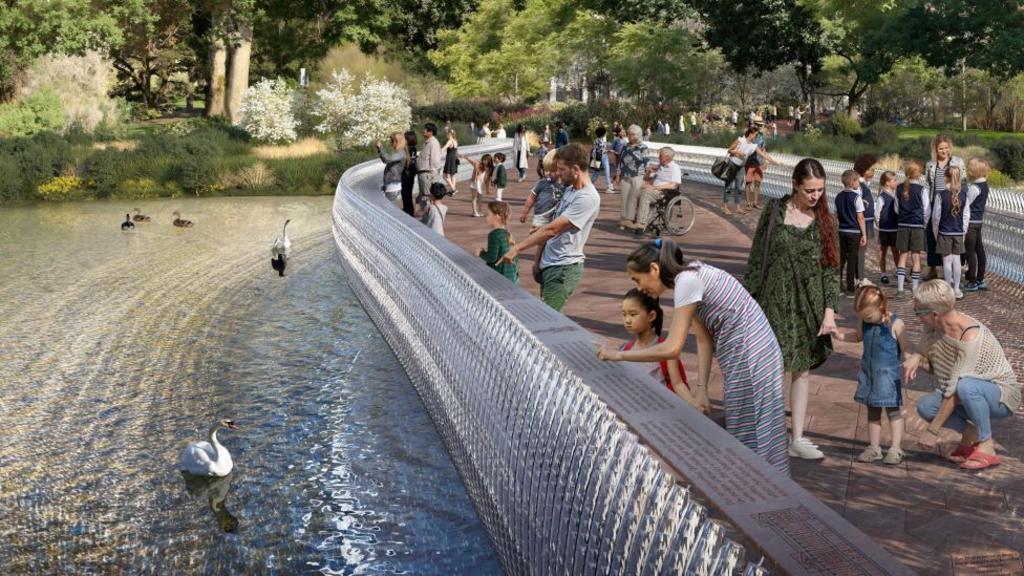The winning design for Queen Elizabeth II’s national memorial has been unveiled, featuring a glass-balustraded bridge, new gates, and commemorative gardens within St. James’s Park, central London.
Lord Norman Foster’s design team secured the commission, incorporating a prominent statue of the late Queen overlooking the Mall, alongside a separate, smaller statue featuring the Queen and Prince Philip.
The translucent bridge, inspired by the Queen’s wedding tiara, complements newly landscaped gardens commemorating the Commonwealth and UK communities.
Lord Foster emphasized the design’s sensitivity to the park’s existing biodiversity, stating, “We respect the biodiversity and nature of that part of the park, which is alive with wildlife.”
The multifaceted design includes a dedicated Prince Philip Gate, alongside the main Queen Elizabeth II monument. The inclusion of Prince Philip, according to Lord Foster, reflects the “inseparable quality” of their relationship.
Selected from five shortlisted concepts, the design balances “traditional and modern, informal and formal elements,” according to Lord Robert Janvrin, chair of the memorial committee and the Queen’s former private secretary.
Lord Janvrin envisions the memorial prompting reflection on the Queen’s “extraordinary life” and its impact on the nation’s evolution, evoking a “sense of her life of service.”
He believes the St. James’s Park location, visible from Buckingham Palace, would have pleased the Queen, noting its proximity to a room where she frequently sat for portraits.
The proposed bridge, with its reinforced glass balustrade, mirrors the tiara from her 1947 wedding, a detail Lord Janvrin believes would resonate with her.
The memorial, reflecting the couple’s 73-year marriage, also incorporates a Prince Philip Gate, honoring the late Duke of Edinburgh. The project’s completion date and final cost remain undetermined, with previous estimates ranging from £23m to £46m.
Republic, an anti-monarchy group, advocates for the royal family to fund the memorial instead of the government.
The design incorporates extensive re-landscaping, including a bridge, two new gates, two gardens, and statues of the Queen, and a depiction of the Queen and Prince Philip.
Lord Foster described the project as an “honor and privilege,” pushing “the boundaries of art and technology.” His previous work includes London’s Gherkin and the British Museum’s Great Court, and Berlin’s Reichstag dome.
He aims to convey the Queen’s values to park visitors, using the memorial’s layered design to reflect the “richness, complexity, and dimensions” of her reign.
The bridge, described as “jewel-like,” is designed for ease of installation, and the final statue designs, pending sculptor selection, currently feature a conventional equestrian portrayal of the Queen.
Baroness Amos, a committee member, praised the “ambitious design,” anticipating it will create a “beautiful space for people to come together,” while the Chancellor of the Duchy of Lancaster, Pat McFadden, lauded the “beautiful memorial” celebrating the Queen’s legacy.
Sign up here for our Royal Watch newsletter for weekly royal news and analysis (UK readers). International readers can sign up here.
Further related content will be added here.

